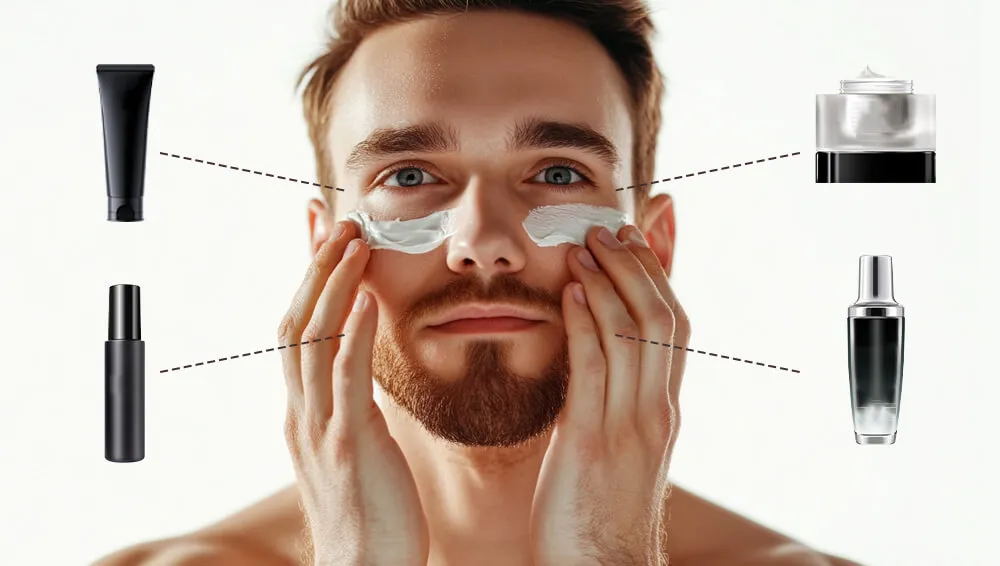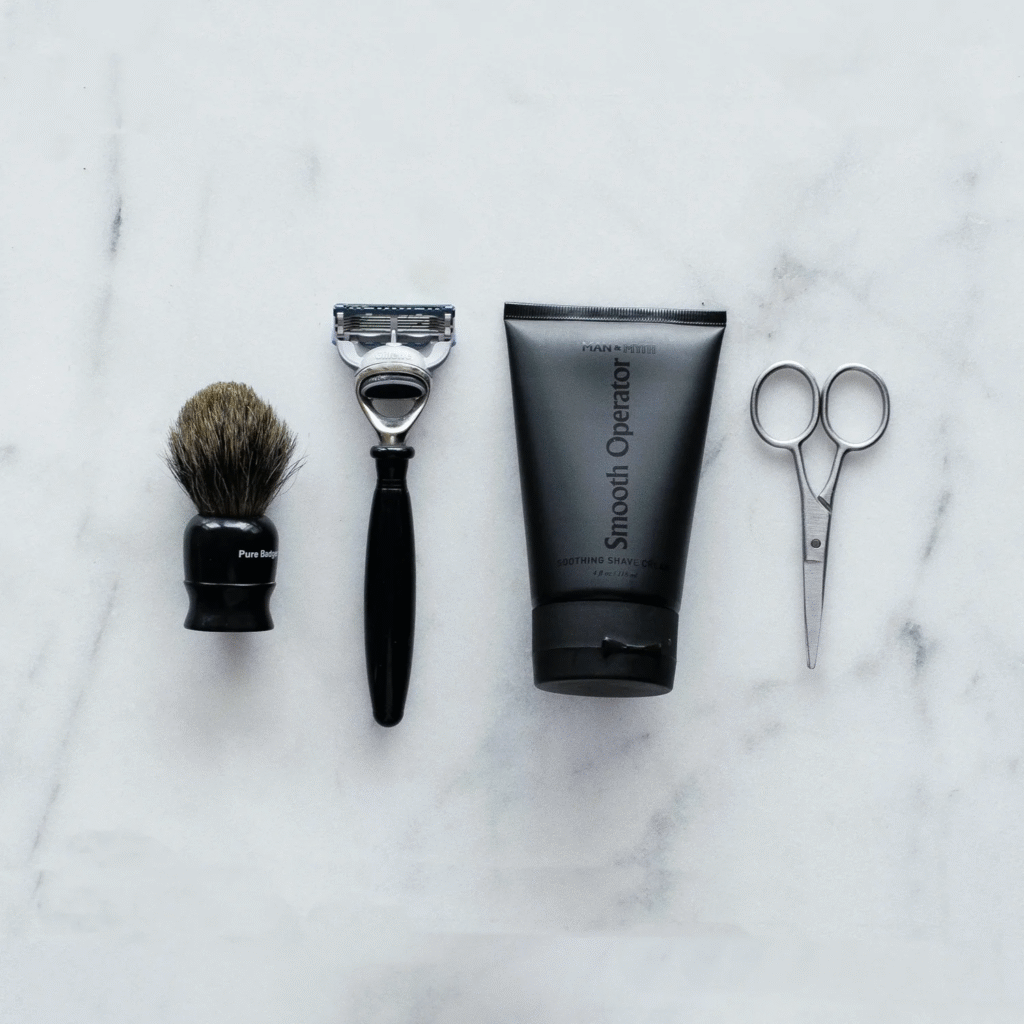
Discover why men are choosing sustainable grooming products in 2025. Learn about eco-friendly self-care trends, health benefits, top brands, FAQs, and a step-by-step guide to building your clean grooming routine.
Men are increasingly turning to sustainable grooming, opting for natural ingredients, plastic-free packaging, and ethical sourcing to align appearance with principles. This trend—rooted in health, environment, and status—has real momentum: nearly three in four men now factor sustainability into their grooming decisions. This article explores the “why,” the how, and the what of clean grooming for men in 2025.
Why “Eco & Clean Grooming” Is More Than a Fad
In 2025, sustainable grooming for men is no longer niche — it’s going mainstream. Fuelled by climate awareness, health-conscious consumers, and evolving norms of masculinity, the industry is witnessing a radical shift. Clean, eco-friendly grooming signals not just self-care, but integrity: you look good and do good.
The global men’s grooming market is projected to grow from USD 61.62 billion in 2024 to USD 85.53 billion by 2032 (CAGR ≈ 4.08 %). Within that expansion, “clean / sustainable / eco” claims are among the fastest-growing segments. Mintel data shows nearly 50% more men’s grooming products launched with clean-beauty claims over a recent five-year span.
Even more telling: 74% of men now consider sustainability a key factor when choosing grooming products — up from 58% only five years ago. Meanwhile, 70% of men reportedly prefer formulations based on natural or organic ingredients, led by younger cohorts like Gen Z.
Therefore, if your grooming routine doesn’t account for eco & clean dimensions, you’re swimming upstream in a fast-changing river. Let’s explore the reasons men are making the switch.

1. Why Men Are Choosing Sustainable Grooming
1. Health & Skin Sensitivities
Men’s skin, especially due to shaving, is often more prone to irritation, micro-cuts, and inflammation. Conventional grooming formulas frequently include sulfates, synthetic fragrances, parabens, phthalates, and other potentially irritating chemicals. Clean grooming brands replace these with plant-based, gentler alternatives.
Real-world example:
A barber in Brooklyn shared that many of his clients complained of “razor burn and clogged pores” from mass-market gels. After switching to a zero-fragrance, sulfate-free shaving cream made with oat and aloe, he noticed clients reported fewer bumps and greater comfort.
2 Environmental Impact & Ethical Choices
Sustainable grooming isn’t just about how your face feels — it’s about how your choices ripple through the planet.
- Products use biodegradable, plant-based packaging, refill systems, or plastic-free solid bars (shampoo bars, soaps).
- Many brands invest in carbon offsetting, ethical sourcing, and cruelty-free practices.
- Biodegradable formulas reduce aquatic pollution from microplastics.
Real-life pivot:
Brooklyn Soap Company markets a solid beard shampoo in a plastic-free tin — both low-waste and high-performance.
3 Reputation, Values & Social Proof
Choosing sustainable grooming products signals more than hygiene — it reflects a man’s values. In workplaces and relationships, sustainability now signals responsibility and social awareness. Grooming has become a form of identity.
4 Trend Momentum & Market Supply
Clean beauty has dominated women’s skincare; now men’s grooming is catching up. In the past few years, launches of men’s grooming products with “clean”, “vegan”, “eco” claims have surged by nearly 50%.
Men’s grooming overall is expected to grow from USD 61.9 billion (2025) to USD 106.7 billion (2035) at ~5.6% CAGR. Even a sliver of this aligned with sustainability is lucrative.

2. Frequently Asked Questions (Long, SEO-Optimized Answers)
1 What does “clean grooming” actually mean?
“Clean grooming” refers to products free from harmful or controversial ingredients (like parabens, sulfates, synthetic dyes), made transparently, with safer manufacturing practices, and often packaged sustainably. It’s about integrity in formulation, sourcing, and packaging.
2 Is sustainable grooming just a marketing gimmick (greenwashing)?
Not always, but sometimes yes. Some brands employ greenwashing by slapping “natural” on packaging without verification. To avoid being fooled:
- Look for third-party certifications (Ecocert, COSMOS, Leaping Bunny).
- Read the entire ingredient list, not just highlighted ones.
- Check for refill programs, supply chain transparency, carbon offsets.
- See if the brand publishes a sustainability report.
3 Are eco grooming products less effective?
No — in fact, many eco-friendly formulas outperform conventional ones. They rely on well-researched botanicals, safer actives, and balanced pH.
Example: A sustainable beard oil using argan, jojoba, and rosemary extract rivals mineral oil blends while providing antioxidant benefits.
4 How can I start transitioning to eco grooming?
- Swap one product at a time.
- Begin with essentials: shampoo, deodorant, soap.
- Finish your current products before replacing.
- Patch test new items.
- Support local brands to cut carbon footprint.
5 What sustainable grooming products should every man own?
- Solid shampoo or refillable shampoo
- Plastic-free deodorant
- Clean shave cream
- Beard oil from plant-based sources
- Moisturizer with SPF
- Solid soap bars
- Bamboo toothbrush or razor handle
6 Are there eco grooming solutions for beard care?
Yes. Solid beard washes, natural beard oils, biodegradable combs, and minimal-waste razor blades are all part of eco-friendly beard grooming.
7 How do I read grooming product labels (to find clean ones)?
- Ingredients are listed by INCI names. Avoid parabens, PEGs, synthetic fragrances.
- Favor humectants like glycerin, aloe, hyaluronic acid.
- Check packaging: refillable, recyclable, plastic-free.
- Certifications: Ecocert, COSMOS, USDA Organic, EWG.
- Ensure batch traceability.
8 Is sustainable grooming more expensive?
Initially yes, but refill systems and multi-use products offset costs. Over time, eco products can be cost-effective.
9 What brands are leading in men’s sustainable grooming?
- Brooklyn Soap Company (solid beard & hair care)
- VMen’s (eco-focused shampoo)
- Kelsen (microplastic-free formulas)
- Local artisanal brands with transparent sourcing
10 How to market eco grooming on WordPress & SEO (Rank Math)?
- Use FAQ schema, headings, and internal linking.
- Add external links with positive or negative sentiment titles.
- Include images/videos with alt text.
- Optimize SEO title + description with Rank Math.
- Keep readability score high.
11 Why do people prefer sustainable products?
People prefer sustainable products because they merge personal care with global responsibility.
- Health benefits: Avoiding harsh chemicals.
- Environmental impact: Cutting plastic and pollution.
- Social identity: Sustainability is respected in relationships and workplaces.
- Long-term savings: Refill systems reduce waste and cost.
A NielsenIQ report found 78% of U.S. consumers value sustainability, with nearly 30% willing to pay more.
12 What is the purpose of eco-friendly products?
The purpose of eco-friendly products is to minimize harm while maximizing effectiveness.
- Reduce waste (compostable packaging).
- Conserve resources (renewable energy, less water).
- Protect ecosystems (non-toxic ingredients).
- Promote responsibility (consumer awareness).
Example: A bamboo razor handle saves dozens of disposable plastic razors from landfills.
3. Pitfalls in Sustainable Grooming (and Solutions)
- Greenwashing → Demand transparency and certification.
- Short shelf life → Store products properly, choose safe preservatives.
- Poor textures/scents → Choose premium eco brands with R&D.
- High import footprint → Buy local brands when possible.
- Boring marketing → Blend performance + ethics in storytelling.
4. Step-by-Step Guide: Building a Clean Grooming Routine
- Audit your current kit — lay out what you have.
- Replace daily-use products first — body wash, deodorant.
- Add specialty products gradually — beard oil, hair clay.
- Use multitaskers — 2-in-1 shampoo/conditioner, body/face bars.
- Recycle/refill responsibly.
- Educate others — share your journey online.
5. Real Stories: Men Who Switched
- David, 29, Austin, TX: Switched to solid shampoo after learning about ocean microplastics.
- Marcus, 34, NYC: Bought eco products as a gift, loved them, and became an Instagram micro-influencer.
- Ravi, 27, Indian-American: Uses heritage ingredients (neem, turmeric) from sustainable brands.
Final Thoughts
Eco and clean grooming isn’t just a passing trend—it’s becoming a defining lifestyle choice for modern men. As awareness of climate change, plastic waste, and toxic chemicals grows, more consumers are rethinking their daily routines. Choosing sustainable grooming products is no longer about sacrifice; it’s about empowerment. Men today are proving that you can look sharp, feel confident, and still make choices that protect the planet.
By investing in eco-friendly razors, natural deodorants, refillable shaving creams, or bamboo toothbrushes, men are contributing to a global shift toward healthier ecosystems and ethical industries. The purpose goes far beyond grooming—it’s about aligning self-care with a cleaner future.